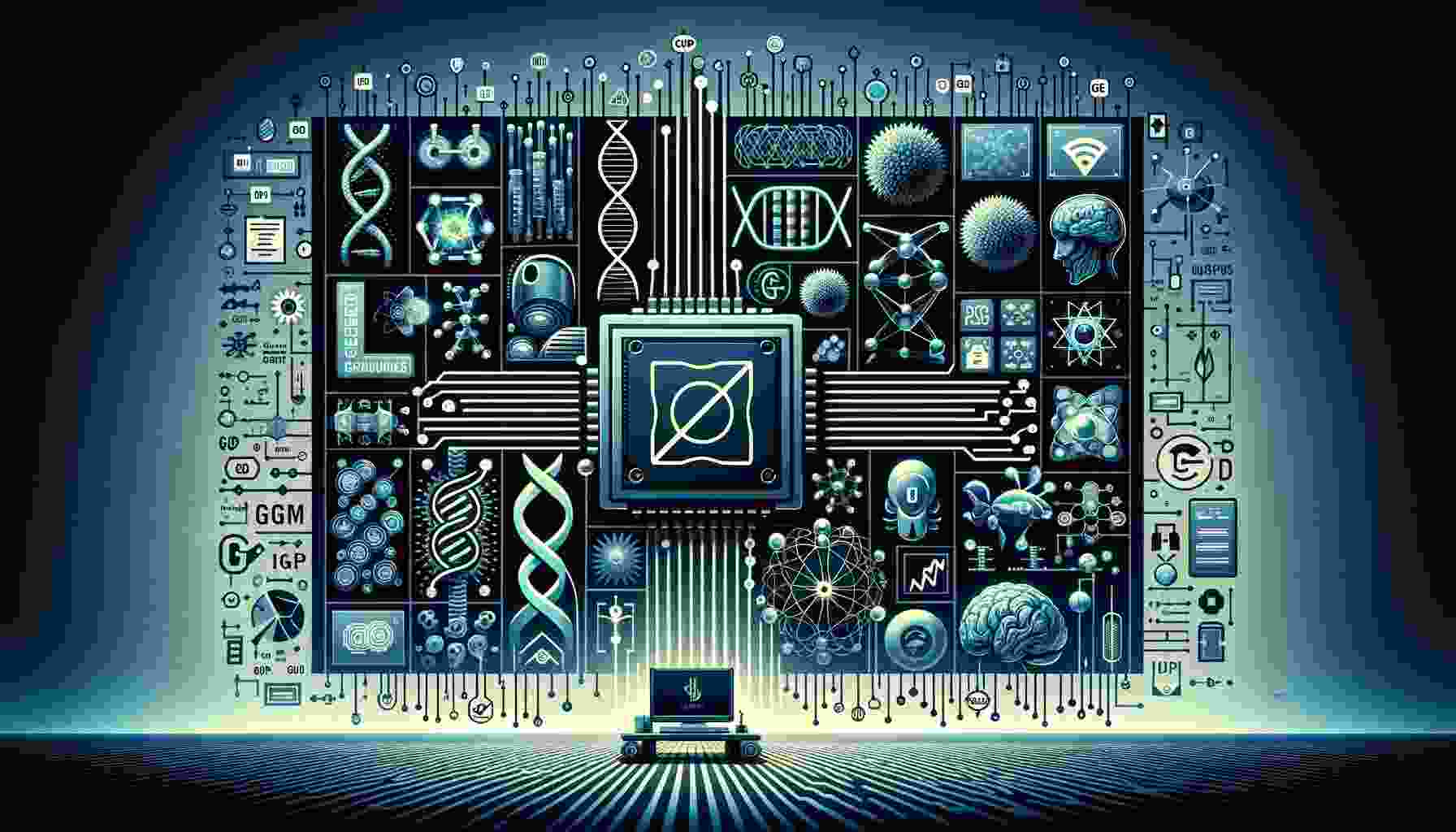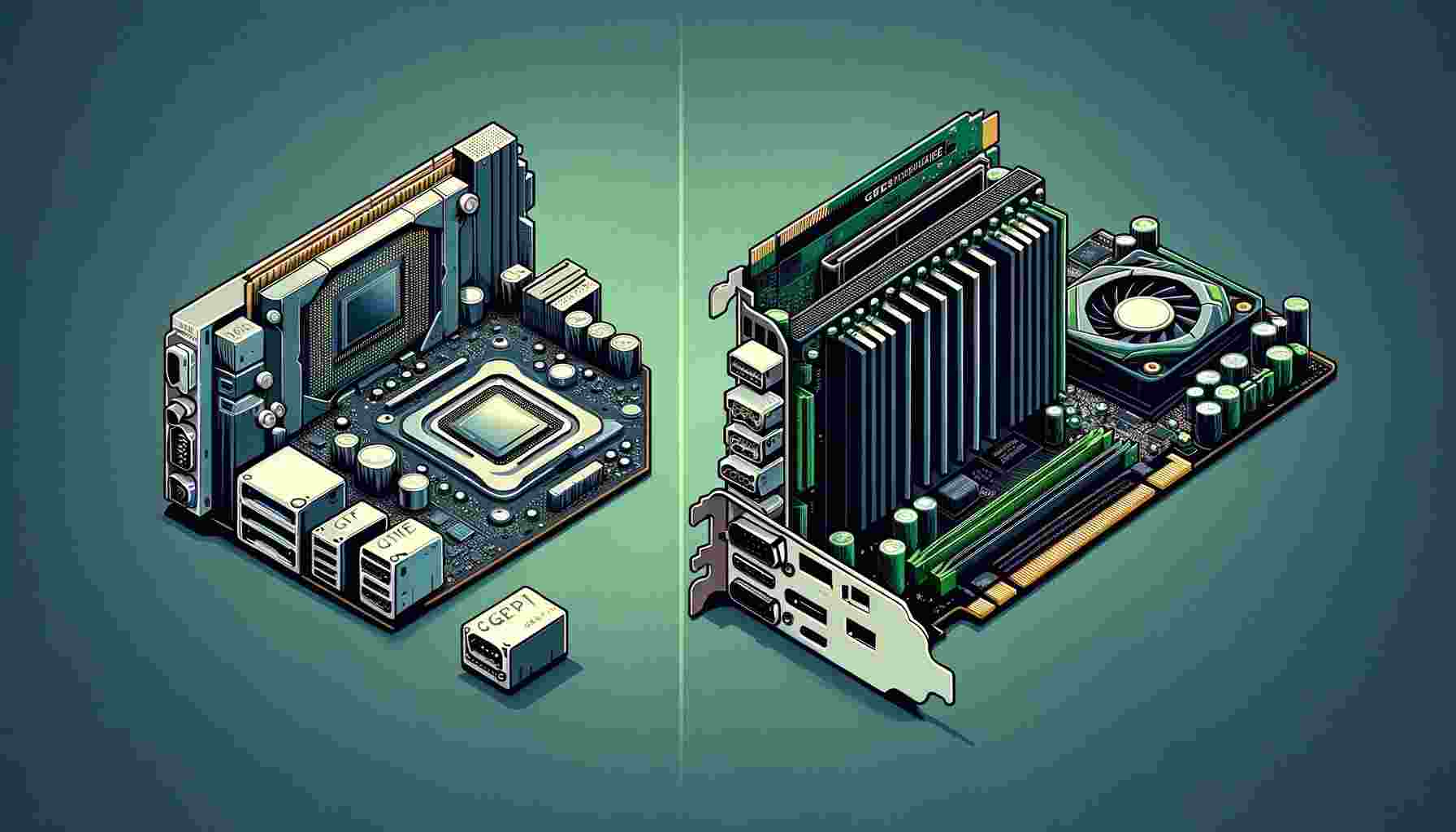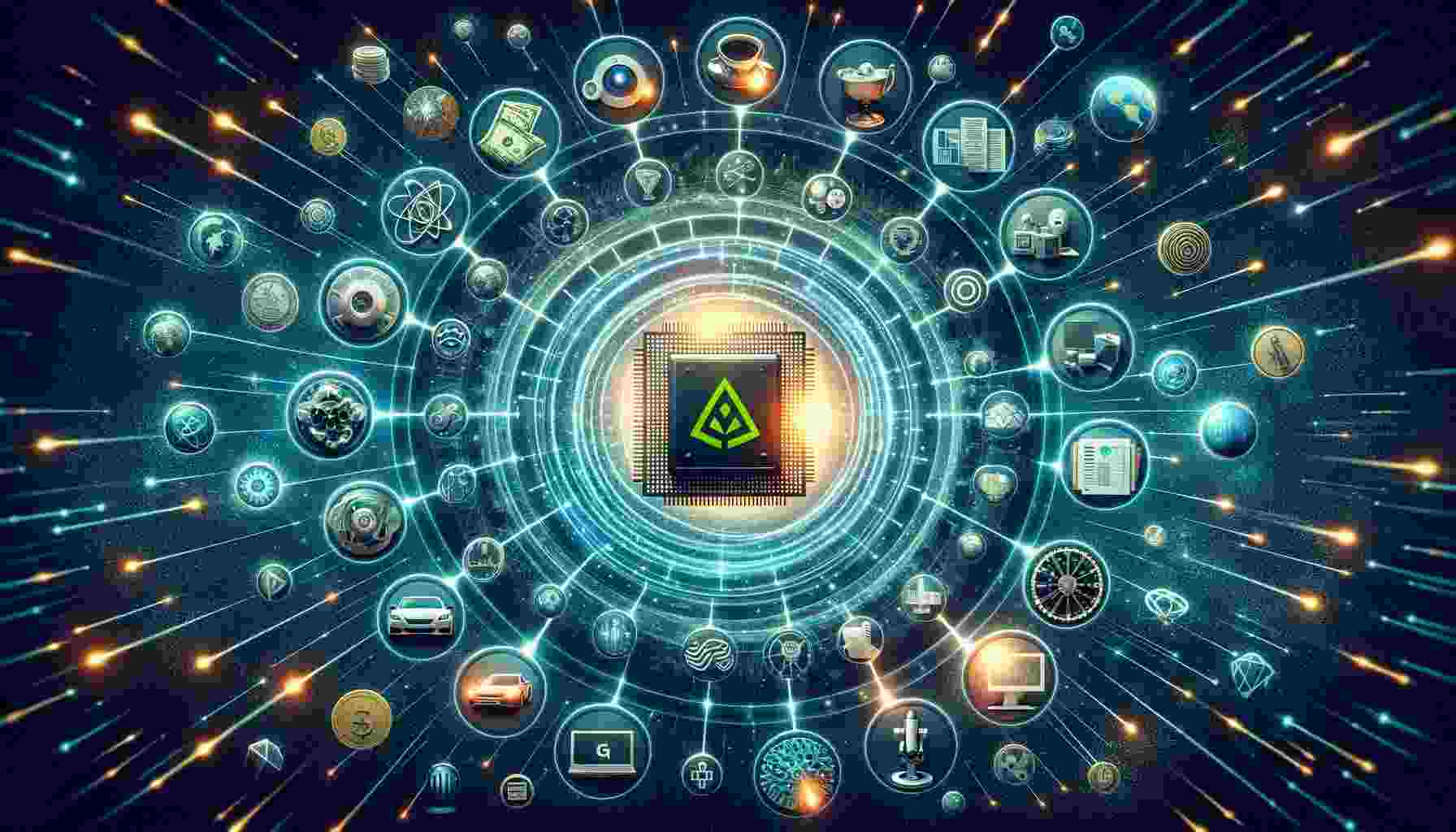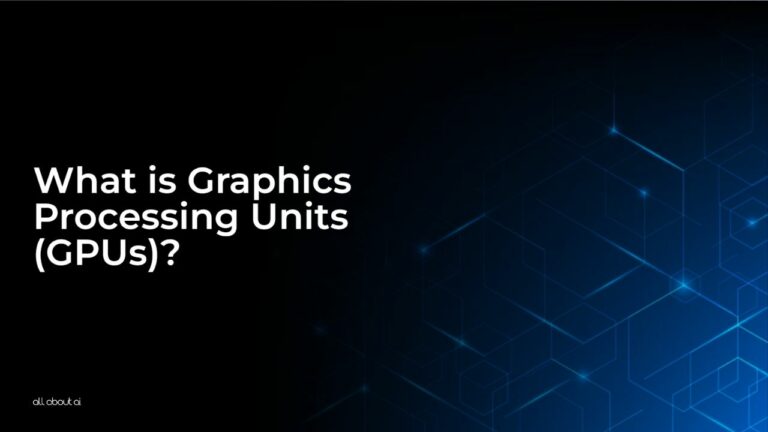Graphics Processing Units (GPUs) are specialized electronic circuits designed to rapidly manipulate and alter memory to accelerate the creation of images in a frame buffer intended for output to a display device.
Originally limited to computer graphics, their highly parallel structure makes them more efficient than general-purpose CPUs for algorithms where the processing of large blocks of data is done in parallel.
In this article, we will discuss what is Graphic Processing Unit, its evolution, role, and different concepts written by AI Experts at All About AI.
Imagine your computer is an artist trying to draw lots of pictures very fast. A Graphics Processing Unit (GPU) is like a super-fast coloring book that helps the artist fill in colors quickly and make beautiful pictures to show on the screen. It’s special because it can work on many parts of the picture at the same time, making it much faster than if the artist had to color each part one by one. At first, GPUs were just used to help make video games look good, but because they’re so good at coloring many parts at once, scientists found they could also use them for other cool stuff, like helping computers learn and make decisions.What is Graphics Processing Units (GPUs)? Coloring Fast and Furious!
Overiew of Graphics Processing Units
Let’s get started with a brief overview of areas Graphics Processing Units can assist;
High-Performance Gaming
GPUs are crucial for rendering complex graphics in modern video games, enabling detailed and immersive gaming environments. By handling the heavy graphical load, they allow for smoother frame rates and higher resolution textures, enhancing the overall gaming experience.
Scientific Computing
In scientific research, GPUs significantly reduce the time needed for processing large datasets and complex simulations. Their ability to perform parallel operations makes them ideal for tasks such as molecular modeling, astrophysical calculations, and climate change studies.
AI and Machine Learning
GPUs are integral in training AI models, thanks to their efficiency in handling simultaneous computations. This capability is essential for processing large neural networks and datasets, accelerating the development and application of AI technologies.
Video Editing and Rendering
In content creation, GPUs drastically reduce rendering times for high-resolution videos and animations. Their power allows for real-time editing, quick encoding, and efficient rendering processes, which are critical in professional video production.
3D Graphics Rendering
GPUs are responsible for rendering complex 3D graphics in movies and virtual simulations. They enable the creation of realistic textures, lighting, and animations, bringing digital worlds to life in a way that was once only possible in high-end rendering studios.
The Evolution of Graphics Processing Units Technology
GPUs have undergone a significant transformation, from their origins in basic image rendering to their current status as multi-faceted computing powerhouses.
Initial Image Rendering Focus:
Early GPUs were primarily designed for rendering images and handling basic visual tasks on personal computers. This involved simple operations like drawing lines and filling polygons.
3D Rendering Capabilities:
The evolution to 3D rendering marked a significant leap. GPUs started to handle more complex tasks like texture mapping and anti-aliasing, providing more realistic and detailed images, especially in video games.
Programmable Shaders:
The introduction of programmable shaders in the 2000s allowed developers to create more varied and complex visual effects. This innovation enabled GPUs to process a wide range of graphical tasks, making them more versatile.
Parallel Processing:
GPUs began to be recognized for their parallel processing capabilities beyond graphics.

This led to their use in non-graphical tasks, such as computational biology, cryptography, and other scientific computations.
AI and Machine Learning:
The latest evolution involves GPUs playing a key role in AI and machine learning. Their ability to process multiple computations simultaneously makes them ideal for training complex neural networks, a task central to modern AI applications.
The Role of Graphics Processing Units in Cloud Computing
GPUs have become a pivotal element in cloud computing, offering powerful and scalable computing resources.
Scalable High-Performance Tasks:
Cloud GPUs provide the necessary computing power for high-performance tasks without physical hardware on-site. This scalability is crucial for businesses and researchers dealing with fluctuating computational needs.
AI and Machine Learning in the Cloud:
They enable complex AI and machine learning processes in the cloud, making these technologies more accessible to a wider range of users. This has democratized access to advanced AI tools, allowing more organizations to leverage AI capabilities.
Flexibility for On-Demand Computing:
Cloud GPUs offer the flexibility of on-demand resources for intensive computing tasks. This means users can access GPU resources as needed, optimizing costs and efficiency.
Enhanced Cloud-Based Gaming:
In the gaming industry, cloud GPUs enable high-quality, cloud-based gaming experiences. Players can enjoy advanced games without needing high-end hardware, as the heavy processing is offloaded to cloud servers.
Data Centers and Large-Scale Workloads:
Their deployment in data centers has revolutionized how large-scale workloads are managed. Cloud GPUs efficiently handle massive amounts of data, making them indispensable in big data analytics and large-scale web services.
Graphics Processing Units vs. CPU: Understanding the Differences
Understanding the distinct roles of GPUs and CPUs sheds light on how modern computing systems achieve efficiency and power.
General-Purpose vs. Specialized Tasks:
CPUs are designed to handle a wide range of general-purpose computing tasks. They excel in sequential serial processing, making them suitable for tasks that require complex decision-making and control functions.
Parallel vs. Sequential Processing:
In contrast, GPUs are built for parallel processing and can handle thousands of threads simultaneously. This makes them particularly efficient for tasks broken down into smaller, concurrent operations.
Graphics Rendering and Image Processing:
GPUs are specifically optimized for graphics rendering and image processing. Their design allows for faster computation of complex mathematical tasks, such as those involved in 3D graphics and video rendering.
Integrated vs. Discrete Graphics Processing Units
The choice between integrated and discrete GPUs hinges on the specific needs and computing tasks of the user.

Integrated GPUs:
Built into CPU: Integrated GPUs are part of the same chip as the CPU. This design leads to a smaller physical footprint and lower power consumption.
Energy Efficiency: They are more energy-efficient, generating less heat, which is particularly beneficial in portable devices like laptops.
Cost-Effectiveness: Integrated GPUs are more cost-effective, making them a suitable choice for everyday computing tasks that do not require intensive graphics processing.
Discrete GPUs:
Separate Hardware Component: Discrete GPUs are standalone cards installed separately from the CPU. This allows them to have their dedicated resources like VRAM (video RAM).
Superior Performance: They provide higher graphics processing power, essential for tasks that require intensive graphics computation like 3D rendering, high-end gaming, and professional video editing.
Preferred by Professionals and Gamers: Their superior performance makes them the choice for professionals in graphics-intensive fields and gaming enthusiasts who require the highest quality graphics and processing speed.
Modern Applications of Graphics Processing Units
The versatile nature of GPUs has led to their widespread use in various modern applications.
Gaming:
In the gaming industry, GPUs render high-quality graphics, ensuring smooth and immersive gameplay. They handle complex graphics processing tasks, allowing for realistic environments and detailed textures in modern games.
Artificial Intelligence:
GPUs accelerate the training of AI models and algorithms. Their ability to perform parallel computations quickly is crucial for processing the vast amounts of data used in AI.
Content Creation:
GPUs play a significant role in digital content creation, including video production and 3D animation. They enable faster rendering of high-resolution content, making them indispensable in the film and animation industries.
Scientific Simulations and Data Analysis:
GPUs are used extensively in scientific research for simulations and data analysis. Their parallel processing capabilities allow for faster computations in fields like physics, biology, and environmental science.
Cloud Computing:
Cloud-based services leverage GPUs to offer scalable, high-performance computing power. This includes applications in cloud gaming, virtual desktops, and AI as a service.
Case Study: AWS and Cloud Graphics Processing Units
Amazon Web Services (AWS) has been at the forefront of providing cloud-based GPU solutions, catering to various computing needs.
Diverse GPU Instance Offerings:
AWS offers a variety of GPU instances, each designed to cater to specific computational requirements. This includes instances optimized for machine learning, high-performance computing, and graphics-intensive applications.
Support for AI Workloads:
AWS’s cloud GPUs are instrumental in supporting AI and machine learning workloads. They provide the necessary computational power to train complex models efficiently.
Enabling High-Performance Gaming:
Through AWS, game developers and publishers can deliver high-quality gaming experiences. Their cloud GPUs support the demands of modern games, allowing players to enjoy advanced graphics without the need for high-end local hardware.
Facilitating Scientific Research:
AWS GPUs are used in scientific research, providing the computational power needed for simulations and large-scale data analysis. This has enabled advancements in various scientific fields.
Big Data Analytics:
The cloud GPUs provided by AWS play a crucial role in big data analytics. They allow for the processing of large datasets quickly and efficiently, enabling deeper insights and faster decision-making.
The Future of GPUs
The trajectory of GPU technology points towards exciting future advancements and applications.
Advancements:
Here are some anticipated advancements in GPUs expected in the future.
- Processing Power and Efficiency: Future GPUs are expected to see continuous improvements in processing power, along with increased energy efficiency. This will enhance their capabilities while reducing their environmental impact.
- Energy-Efficient Architectures: The development of more energy-efficient GPU architectures will be crucial in making them suitable for a wider range of devices, including those with power constraints.
- Integration with Emerging Technologies: GPUs are likely to see integration with emerging technologies such as quantum computing, which could open up new possibilities in computational power and efficiency.
- Enhanced AI Capabilities: Future GPUs will likely have enhanced capabilities specifically tailored for artificial intelligence and machine learning, further accelerating the development and application of AI technologies.
Applications:
Now let’s find out application of GPUs in the different fields and industries in future.

- Immersive Technologies: GPUs will play a significant role in immersive technologies like virtual reality (VR) and augmented reality (AR), providing the necessary processing power to create realistic and interactive virtual environments.
- Autonomous Vehicles: In the automotive industry, GPUs are expected to be key components in the technology driving autonomous vehicles, processing vast amounts of sensory data in real time.
- Personalized Healthcare: GPUs will likely find applications in personalized healthcare and genomics, enabling faster medical data processing for personalized treatment plans and research.
- Environmental Modeling: The use of GPUs in environmental modeling and climate simulations is expected to increase, providing more accurate and faster analyses of environmental data.
Delve into the world of artificial intelligence via our thoughtfully organized glossaries. Whether you’re a newcomer or an advanced scholar, there’s always something fresh to uncover!Want to Read More? Explore These AI Glossaries!
FAQ’s
What do Graphics Processing Units mean in image processing?
Why is a Graphics Processing Unit more suitable for image processing?
What is the difference between a Graphics Processing Unit and a graphics card?
How does a Graphics Processing Unit accelerate machine learning tasks?
Conclusion:
Graphics Processing Units (GPUs) are pivotal in shaping the landscape of modern computing. They offer unparalleled processing capabilities in various domains, from gaming and content creation to scientific research and artificial intelligence.
In this guide, we have discussed what is Graphics Processing Units and everything related to it in detail. If you want to learn expand your AI knowledge more and understand different terminologies and concepts, read more article in our AI Knowledge Book.





